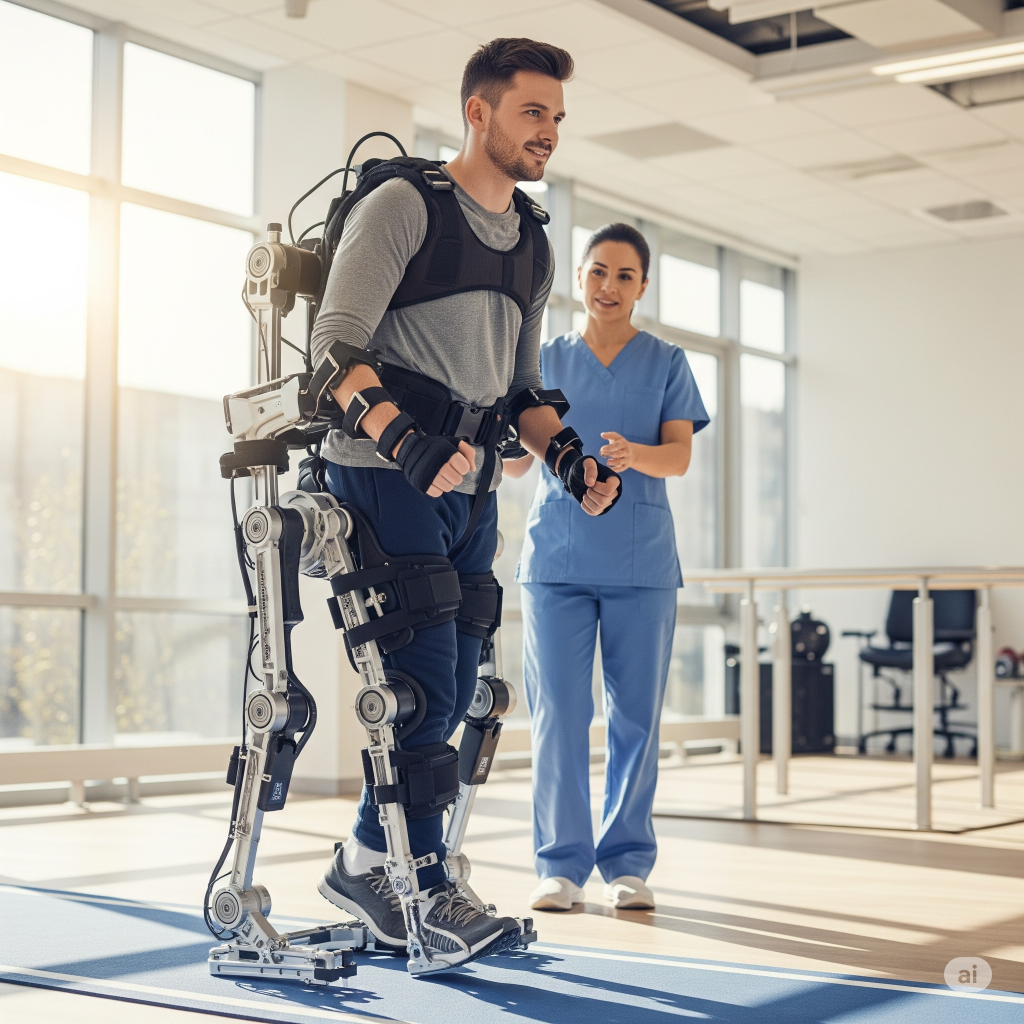For millions worldwide living with paralysis, the prospect of independent ambulation has long remained a distant aspiration. However, a remarkable convergence of robotics, artificial intelligence, and cloud computing is now heralding a transformative era in assistive technology. Wandercraft, a pioneering French company, in strategic collaboration with technology giants Nvidia and Amazon Web Services (AWS), has unveiled the Atalante exoskeleton, an innovative device poised to revolutionize the lives of paralyzed individuals by enabling them to walk again. This groundbreaking technology is not just a mechanical aid; it’s an intelligent, adaptive system that learns and responds to the user’s intentions, offering a pathway to renewed mobility and independence.
The Technological Marvel Behind Atalante
The Atalante exoskeleton represents a significant leap beyond traditional passive exoskeletons. Its core innovation lies in its sophisticated AI algorithms, which act as the brain of the device. These algorithms continuously analyze the user’s subtle movements and weight shifts, predicting their intended actions and seamlessly coordinating the robotic legs to facilitate natural and controlled gait.
Key Technological Features:
- Advanced AI-Powered Gait Control: Unlike earlier exoskeletons that often required manual initiation of steps, Atalante utilizes advanced sensor technology and machine learning to dynamically adapt to the user’s movements, mimicking a more natural walking pattern.
- Self-Balancing Capabilities: The exoskeleton is engineered with self-balancing capabilities, reducing the user’s reliance on crutches or other external supports and freeing up their hands.
- Customizable and Adaptable: The system can be personalized to individual user needs and adjusted over time as their strength and control potentially improve.
- Integration with Powerful Computing: Leveraging Nvidia’s high-performance processors, Atalante can execute complex AI calculations in real-time, ensuring a smooth and responsive walking experience.
- Cloud Connectivity and Data Analysis: Through AWS’s secure cloud infrastructure, Wandercraft can collect and analyze data on exoskeleton usage, facilitating continuous improvements to the technology and personalized therapy programs.

Eve: Bringing Mobility Home with Medicare Support
Building upon the success of the institutional Atalante model, Wandercraft has developed Eve, an advanced version specifically designed for home use. This transition marks a critical step towards integrating exoskeleton technology into the daily lives of paralyzed individuals. Eve boasts enhanced user-friendliness, improved battery life, and features tailored for navigating domestic environments.
A pivotal development for the accessibility of Eve in the United States is the recent granting of Medicare reimbursement codes. This landmark decision signifies a growing recognition of the clinical value and life-changing potential of AI-powered exoskeletons. Eligible patients in the U.S. could receive coverage of up to $93,000, significantly reducing the financial burden and making this cutting-edge technology a tangible option for a larger segment of the paralyzed population.
The Profound Benefits of Exoskeleton Technology
The implications of AI-powered exoskeletons extend far beyond simply enabling walking. They offer a multitude of physical, psychological, and social benefits:
- Improved Physical Health: Standing and walking with an exoskeleton can improve cardiovascular health, circulation, bone density, and muscle strength. It can also help reduce the risk of secondary complications associated with prolonged sitting, such as pressure ulcers and urinary tract infections.
- Enhanced Independence and Quality of Life: Regaining the ability to move independently can have a profound impact on an individual’s self-esteem, confidence, and overall quality of life. It allows for greater participation in daily activities, social interactions, and work opportunities.
- Potential for Rehabilitation and Neurological Recovery: While primarily an assistive device, some studies suggest that the active movement facilitated by exoskeletons may have a positive impact on neurological recovery in certain individuals. The repetitive motion and weight-bearing can stimulate neural pathways and potentially lead to some functional improvements over time.
- Reduced Burden on Caregivers: For individuals requiring significant assistance with mobility, exoskeletons can reduce the physical and emotional strain on caregivers, promoting greater independence for both the user and their family.
Expanding Access and the Future of Exoskeleton Technology
Wandercraft’s Atalante system is already deployed in over 100 medical institutions across Europe and the United States, providing valuable rehabilitation tools for patients with spinal cord injuries and other conditions causing paralysis. The introduction of Eve for home use, coupled with Medicare reimbursement, signals a significant step towards broader accessibility.
However, challenges remain in making this technology universally available. The cost of exoskeletons, while potentially offset by insurance coverage in some cases, can still be a barrier for many. Ongoing research and development are focused on reducing manufacturing costs, improving device functionality, and expanding eligibility criteria for reimbursement.
The future of AI-powered exoskeletons holds immense promise. We can anticipate further advancements in:
- More Intuitive Control Systems: Researchers are exploring brain-computer interfaces and other advanced control mechanisms for even more seamless and natural integration between the user and the exoskeleton.
- Personalized and Adaptive Assistance: Future exoskeletons may be able to learn individual user patterns and provide increasingly tailored levels of support based on their specific needs and abilities.
- Wider Range of Applications: While currently focused on paralysis, exoskeleton technology has the potential to assist individuals with other mobility impairments, as well as in industrial and military applications.
In conclusion, the development and deployment of AI-powered exoskeletons like Wandercraft’s Atalante and Eve represent a monumental step forward in assistive technology. By combining the power of robotics, artificial intelligence, and cloud computing, these innovative devices are not only enabling paralyzed patients to walk again but are also ushering in a new era of independence, improved health, and enhanced quality of life. With increasing accessibility and ongoing advancements, the future holds tremendous potential for exoskeleton technology to transform the lives of individuals with mobility challenges worldwide.

Leave a Reply